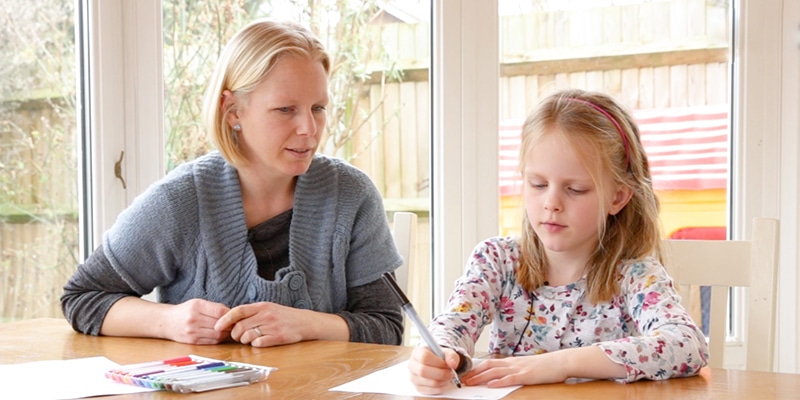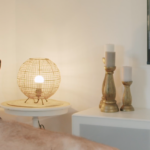MED-EL
Published Dec 19, 2018
Rehab At Home: Why Should My Child Practice Listening To Descriptions?

Today’s Rehab At Home post is about listening to descriptions. Games that involve listening to descriptions are a great way to help build your child’s listening skills, and ultimately their language skills.
Why Should My Child Practice Listening To Descriptions?
There are two main reasons why listening to descriptions is important if your child has a hearing impairment.
- It helps your child’s auditory memory.
Auditory memory is the ability to listen to a piece of information, process it, store it and then recall or act on what was said. This could be answering a question, carrying out a direction, or retelling a story.
For example, the teacher says “Find your pencils and exercise books”. Your child has to listen, comprehend, and remember the key information “pencil and exercise book”, then recall the items to complete the instruction. By giving your child descriptions to listen to, you are helping them to practice remembering, processing, recalling, and linking pieces of auditory information together.
- It helps your child’s vocabulary
A child’s vocabulary should be like an ocean—both wide and deep. It should be wide enough to label and describe many concepts and items, but also deep enough so that they have a range of words to describe these concepts more precisely, and link concepts together. We don’t want them just to know “big”, but also “huge”, “gigantic” and “colossal”.
- Teach “dinosaur”, but also “herbivore”, “Triceratops” and “extinct“
- Teach “run“, but also “sprint“, “dash“ and “exercise“
- Teach “microwave“ but also “heat“, “dinner“, “electrical appliance“
Develop your child’s vocabulary by adding descriptions to your daily routines. A large vocabulary will enhance your child’s storytelling, reading comprehension and writing.
How Can My Child Practice Listening To Descriptions?
Replace the name of the key item in your instructions or conversation with a description. This gives your child the opportunity to listen to and identify the object from your ‘clues’. Instead of saying “get your shoes“, say “find something to put on your feet so we can go outside“. Be sure to make this a fun guessing game, rather than a test! If your child doesn’t understand, it is ok. It shows you they need help to learn those describing words and link them together with the object.
What Descriptions Should We Practice?
Remember when using descriptions, don’t just talk about colors, sizes and shapes. Think about how you can add words to describe:
- Actions “I can see an animal that is squirming in the garden. Can you see it?”
- Functions “We need something to stir the soup. Can you find something we can stir with?”
- Emotions “Can you find the person who looks worried?”
- Locations “At the top of the page, there is a picture of my favorite food!“
The complexity of your descriptions will depend on your child’s current listening and language skills. In order for your child to learn to understand and use many different words, you first have to teach them these words! Children need to hear a word many times, and in many different contexts, before they understand how to use it. Expand your child’s vocabulary by using new words in familiar contexts, and in sentences with familiar words.
What Activities Can We Do With Younger Children?
You can add descriptions to any activity or task during your daily routine. In the video, Penny’s mother took the opportunity to describe stickers before selecting some to decorate a birthday card.
Here are some more ideas for younger children.
- Books. When reading with your child, talk about the pictures using descriptions. For example: “Grandma is going to have something to drink. She will pour it from the pot, it is very hot! She is going to have a cup of tea“.
- Tidying up. Give your child a specific item to put away: “You tidy up all of the toys that are soft, and I will tidy all of the toys that are for building“.
- Daily instructions.
- Instead of “Put your coat on“, you could say “It’s cold outside. We need to wear something to keep us warm. “
- Instead of “Find your bag for school“, you could say “Don’t forget the thing you carry to school. We need to put your book inside.“
- Instead of “Would you like juice?” you could say “Would you like something that is sweet, cold and comes from oranges?“
What Activities Can We Do With Older Children?
Listening to descriptions will help to develop the listening and language skills of children of all ages. As your child grows older, use descriptions that are longer and more complex to continue to extend their skills. In this video, Jessica’s mother gives descriptions of ingredients while writing a shopping list. This task is difficult as Jessica doesn’t have the objects in front of her, but has to listen to and link the clues together.
Here are some other ideas for older children.
- I Spy. Play I spy with your child. Give descriptions for them to piece together and identify objects.
- Food. Give descriptions while choosing snacks or meals. You could say “For breakfast, I am going to cook something that is hot. It comes from a chicken. I will crack it into the pan.“
- Drawing. Describe a picture, which your child has to draw from your instructions. Then swap roles, and let them describe a picture for you.
This post was written by Natalie Teakle with help from rehabilitation specialist Aneesha Pretto.
Penny’s mother Sarah is also a volunteer HearPeers Mentor. To chat with her about your hearing experiences and their life as parent of children with an implant visit the HearPeers website.
Want more from Rehab At Home? Check out all the videos on our Rehab At Home intro page.
Find out more about how cochlear implants work and how they could help you or your child.
MED-EL
Was this article helpful?
Thanks for your feedback.
Sign up for newsletter below for more.
Thanks for your feedback.
Please leave your message below.
Thanks for your message. We will reply as soon as possible.
Send us a message
Field is required
John Doe
Field is required
name@mail.com
Field is required
What do you think?
MED-EL


